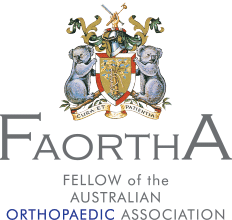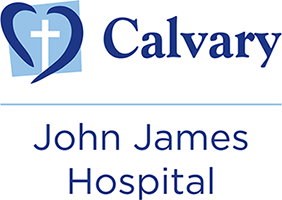Knee
Arthroscopy
By surgically inserting a tiny camera — arthroscope — into your knee, Dr Damian Smith can use this minimally invasive procedure to examine and repair a number of knee conditions.
Book an Appointment
A knee arthroscopy is a surgical technique used to diagnose and treat problems in your knee joint.
By surgically inserting a tiny camera —arthroscope — into your knee, Dr Damian Smith can use this minimally invasive procedure to examine, diagnose and repair a number of knee conditions such as torn anterior or posterior cruciate ligaments, fractures in the knee bones or pieces of torn cartilage that are loose in the joint.
This procedure takes less than an hour, depending on the severity of your knee problem and the complexity of the procedure required. Any medical treatment has potential risks and complications that you should be aware of.
An arthroscope is a thin fibre optic device that can be passed into joints to evaluate and allow the treatment of a number of conditions. A camera is attached to the arthroscope and the inside of the joint can then be visualised on a video monitor. Arthroscopy has now become a common procedure and its minimally invasive nature allows for it to be performed as a day surgical procedure.
Indications for arthroscopic knee surgery
Arthroscopy is a very common surgical procedure performed on the knee and it allows a number of conditions to be treated. Some of the conditions that can be treated with arthroscopic knee surgery include:
- Meniscal tears
- Patellofemoral (knee cap) conditions
- Joint cartilage injuries & loose bodies
- Anterior and posterior cruciate ligament reconstruction
Pre-operative care
Having good condition in the muscles around the knee joint prior to your surgery will aid your recovery. It is advised that you make an appointment with your physiotherapist prior to your surgery for advice and direction regarding appropriate exercises and your physiotherapist will be instrumental in assisting you recover following your surgery. If you do not have a physiotherapist then speak with Dr Smith and he will be able to organise one for you.
Surgery
Prior to your surgery a thorough consultation with Dr Damian Smith will be undertaken. It is important at this consultation to tell Dr Smith about your past and present medical conditions, any allergies that you may have and any medications that you are currently taking. It is advised that you stop taking Aspirin and anti-inflammatory medication 7 days prior to your surgery. It is advised that you stop smoking at least 2 weeks prior to your surgery.
Day of your surgery
On the day of your surgery you will be required to fast. The anaesthetic team and hospital will advise you regarding fasting times. On the day of surgery, following your admission, you will be greeted by Dr Smith and the surgical team in the holding bay of the operating theatres at the hospital. The limb undergoing surgery will be correctly marked and identified prior to your anaesthetic. The surgery is usually performed under a general anaesthetic. A tourniquet is fitted around the thigh and inflated during the procedure to allow good visualisation and minimal blood loss during the operation. Most arthroscopic procedures can be performed through two small incisions (portals) at the front of the knee but occasionally one or more additional portals may be required for certain conditions. Once your surgery is completed the portals are closed using a surgical suture and sterile dressings and bandages are applied to the knee. The tourniquet is removed.
Post-operative care
Following your surgery you will be taken to the Recovery room before you are returned to the ward. Most patients undergoing an arthroscopic procedure will go home that same day and you will need someone to pick you up from the hospital as you cannot drive for 24hours following an anaesthetic. It is advised that you have someone stay with you overnight.
It is normal to experience some degree of post-operative pain and swelling in the knee. You will be provided with pain relief medication prior to discharge from hospital. Applying an ice pack to the knee for 20-30 minutes every 2 hours will help with your discomfort and it will also help to minimise the swelling. You can remove the bandaging from around the knee after 24 hours but keep the waterproof surgical dressings that are covering the portal sites intact until your wound review appointment with our nurse – usually 10 days following surgery.
Following an arthroscopic procedure most patients will be encouraged to weight bear as tolerated. You might require crutches to aid your mobility but you can do away with the crutches as soon as your strength and balance is adequate. Dr Smith will advise you if you need to protect weight bearing on the limb for any reason. Most patients can return to office type work within 7-10 days.
Returning to manual labour duties may take 3-4 weeks. You may return to driving when you are walking comfortably without mobility aids and you are no longer requiring strong pain relief medications.
Seeing a physiotherapist or exercise physiologist post-operatively will accelerate your recovery and Dr Smith recommends that you make an appointment with your physiotherapist 5-7 days after your discharge from hospital.
Risks of surgery
All surgical procedures carry some risk. Dr Smith encourages you to talk to the anaesthetist regarding risks of anaesthesia. Possible risks related to knee arthroscopy include:
- Infection
- Deep Vein Thromboses/pulmonary emboli (blood clots in the lung)
- Post-operative bleeding
- Wound discharge
- Injury to major blood vessels & nerves
- Joint stiffness
- Ongoing pain
- Regional pain syndrome
- Numbness of the skin near the incision site
Why choose
us?
-
Integrative approach
-
Advanced technology
-
Highly trained and experienced
-
Lower Limb Specialists
-
Personalised care
- Learn more


